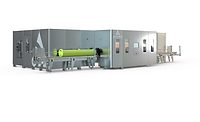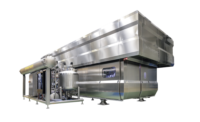Exclusive interview: HPP seal on food products






Food Safety Strategies was recently able to chat with Lisa Wessels, CMO, JBT/Avure, global maker of HPP Machines, about the HPP seal and what it means for the industry.
Liz Parker: Can you talk a bit about the consumer seal and what it exactly means?
Lisa Wessels: The High Pressure Certified Seal is an exclusive mark that can only be used by companies that are members of the Cold Pressure Council, and follow the guidelines for correct and safe use of the technology. The seal is similar to other seals, like Organic or Non-GMO, as it appears on packages as a symbol to consumers. It is the only seal out there today that signifies the food product is safe from bacteria such as listeria, E.coli and salmonella. In addition, because the process is a way to pasteurize without heat, the seal is synonymous with other food trends and properties such as clean label, fresh and nutritious.
LP: What are the benefits of having the HPP seal on products?
LW: The HPP process, which pasteurizes without heat, allows for products to have all natural ingredients, thus clean labels. No preservatives are added, and in addition, the taste, vitamins and nutrients remain intact. The shelf life is also extended during this process, which eliminates food waste. When a consumer sees the seal on the product, they can rest assure that the product has been processed with HPP and the company has agreed to have their HPP process validated for safe practices, thus transparency.
LP: How was the HPP Council formed, and what kind of best practices have they developed for the HPP Industry and the Cold Pressure Consumer Seal?
LW: Many people in the industry were worried about “rogue” companies that are not following food safety guidelines. If somebody were to get sick or even die due to not using the HPP procedures correctly, it would be bad for the entire industry. As such, the CPC was formed. Members are subject to a review of their food safety procedures and are as such, verified as safe. The Seal is a way to proudly exhibit that both the company practices safe processes and have been validated as such, and that the product is safe to eat—no pathogens. Retailers and consumers alike should look for CPC members and products, it is the only seal out there that signifies food safety.
LP: Have there been any challenges using HPP and/or being approved for the HPP seal?
LW: None that I am aware of. Just the opposite—the Council is looking to expand outside of North America. It is very exciting.
Looking for a reprint of this article?
From high-res PDFs to custom plaques, order your copy today!









